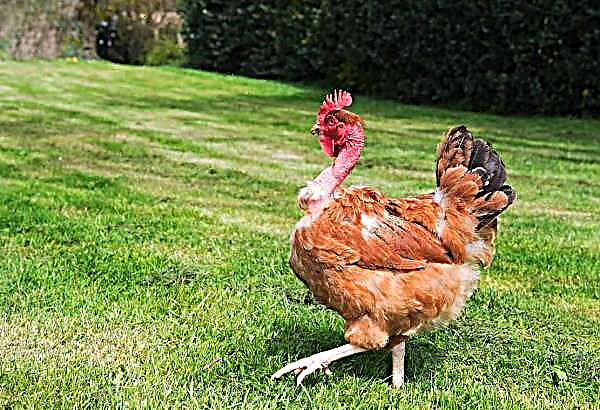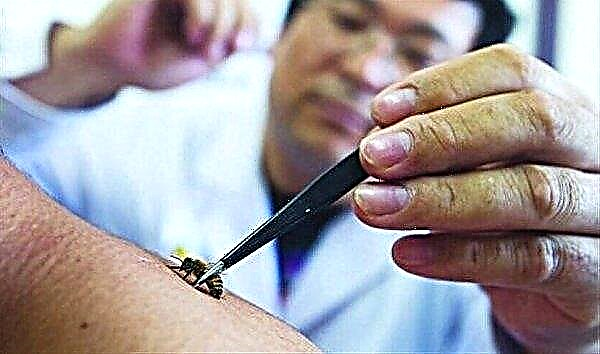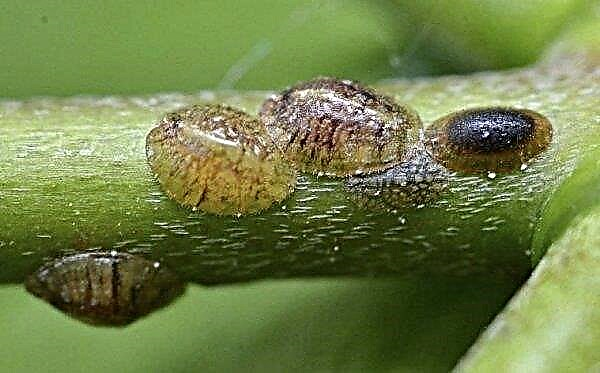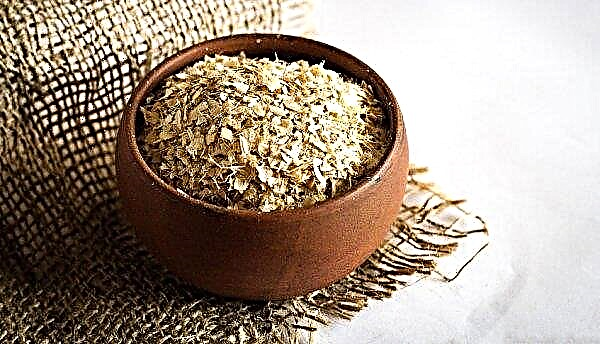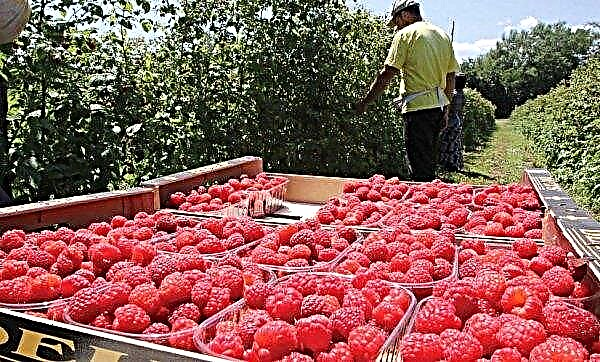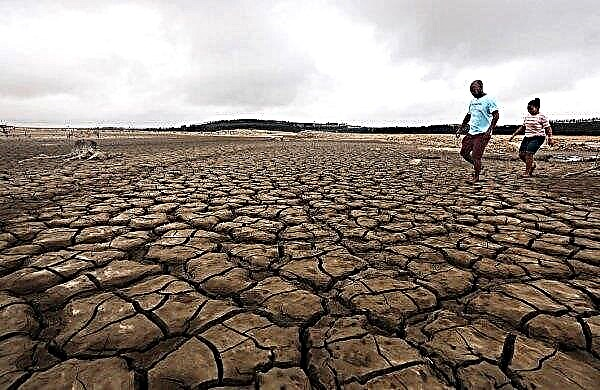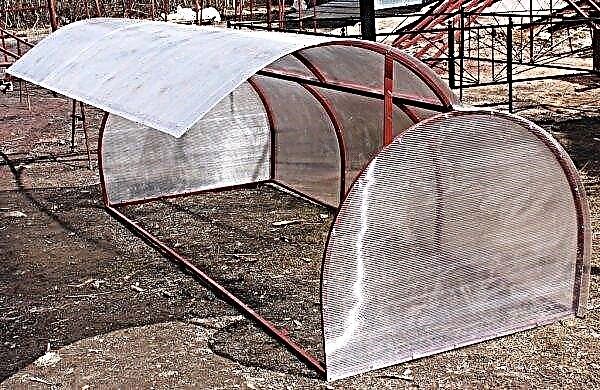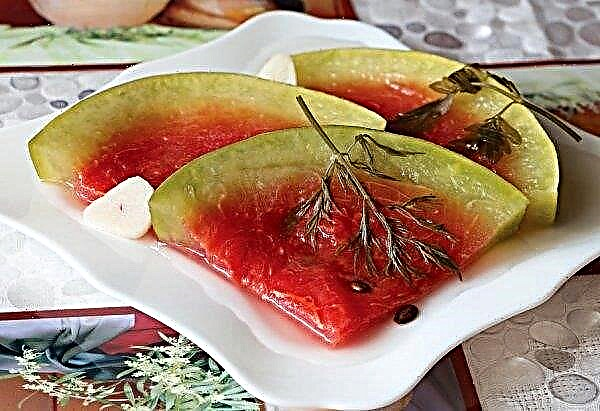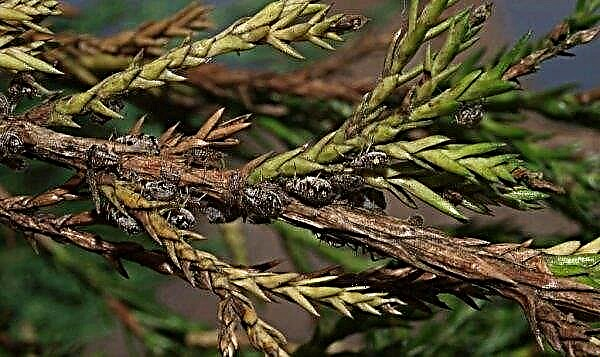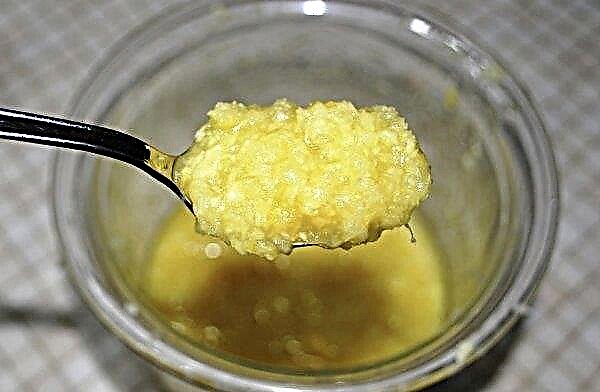Lovers of early potatoes appreciated the variety of Belarusian selection Zorochka. This vegetable has a good taste and ripens early, so that at the beginning of summer there is an opportunity to feast on them. The article will tell about the agrotechnical features of the cultivation of this crop.
Breeding history and growing regions
Zorochka variety was patented by Belarusian breeders, and since 2013 it has been in the State Register of the Republic of Belarus. Since that year, the variety is also listed in the State Register of Achievements of Selection of the Russian Federation. Although the vegetable can be cultivated in any territory with a temperate climate, the regions recommended for its cultivation are North-West and Central.
Did you know? Belarusians are considered world leaders in eating potatoes, therefore they are often called “bulbashs” - in Belarusian the word potato sounds like “bulba”.
Description and characteristic
The culture of Belarusian breeding has the following characteristics:
- early ripening variety;
- suitability for agricultural machinery on any type of soil, but light and medium are more preferable;
- bushes low or higher, with a semi-erect shape;
- there are medium green leaves;
- inflorescences reddish-violet;
- proper care involves receiving two crops - early (harvest on the 45th day) and for storage (on the 75th day);
- productivity: average - 53 t / ha, maximum - 77 t / ha;
- under one bush, you can collect up to 12 tubers, each weighing an average of 120 g;
- tubers of oval elongated shape, with yellow skin and light yellow flesh, eyes are small and shallow;
- root vegetables weigh from 90 to 120 g;
- the presence of starch - up to 14%;
- the fruits have a good taste;
- tuber digestion is weak (good to use in frying, cooking, preparing salads or soup);
- good marketability and high resistance to mechanical damage;
- root crops root health - up to 96%;
- with good and timely mineral nutrition of the crop, the marketability of the fruits and their quantity increase.

Positive qualities and possible disadvantages
- The following positive qualities are inherent in Zorochka variety:
- rapid growth of culture and early ripening of products;
- high yields;
- low whimsicality to climate and soil;
- simple agricultural technology;
- the tubers taste good;
- excellent transportation properties of products and good commercial qualities;
- low susceptibility of fruits to mechanical damage;
- products can last up to 5 months. (in the basements);
- immunity to common cancer;
- average immunity to nematodes and late blight.
- Some disadvantages of culture:
- instability to the Y virus;
- when greenhouse cultivation is attacked by a spider mite;
- doesn't like drought.
Did you know? Potatoes contain more potassium than bananas, more ascorbic acid than oranges, and more fiber than apples.
Potato growing
For the described variety requires standard agricultural technology.
Pre-planting
Important aspects in the pre-sowing preparation of potatoes of the Belarusian selection are:
- germination;
- processing to saturate the seed with nutrients;
- spraying with fungicides to protect against parasites.
Important! Acceptable temperature indicators for germination of potato Zorochka - from +18°WITH up to +20°C. In this case, direct sunlight from the potato is not allowed, so tubers should be covered with paper or cloth.
To get faster seedlings of the crop, it is recommended to germinate the seed according to the following scheme:
- Material for planting has been selected since the fall, collecting specimens from the most thickened large-sized bushes.
- Tubers are taken without damage, healthy and small.
- Potatoes are stored for planting in the cellar, separated from the main crop and other vegetables.
- A couple of weeks before planting, the seed fruits are brought into a warm room and laid out in a single layer on wooden racks or boxes for germination.
 Germination and gardening of potato tubers.
Germination and gardening of potato tubers.Before planting, seed potatoes need to be saturated with nutrients.
Means used for processing potatoes before sowing:
- "Effekton";
- Nitrofoska;
- Fumar
- "Avant-garde nightshade";
- "Mortar";
- "Kemira potato";
- Poteytin.
This contributes to:
- increased resistance to diseases, parasites and adverse weather conditions;
- an increase in the size of the root system;
- accelerate the germination of tubers;
- the rapid emergence of seedlings;
- increase resistance to various diseases;
- yield increase;
- increase the content of vitamins and starch.
Important! To improve potato productivity, you can use wood ash: spray the tubers with water, then spray ash powder on them, allow them to dry, and then grind them into the ground.
Also, before planting the crop, it is important to provide protection against pests by treating the tubers with insecticides:
- Cruiser. With the help of the tool, the insect's nervous system is blocked, due to which the parasites cannot feed and die. Efficiency is observed up to 45 days. The tool is compatible with fungicidal preparations and micronutrient fertilizers.

- "Matador". Low toxicity, does not accumulate in fruits. It provides protection against major parasites and diseases until the end of budding and later. Able to increase the volume of products and improve its quality.

- "Prestige". The product is able to protect the tubers for a month from bears, wireworms, larvae of the May beetle, aphids, cicadas, moths and Colorado beetles. The drug is effective against all kinds of fungi.

Landing technology
Sowing of early ripe Zorachka is carried out in early May, when the soil has already managed to warm up to + 10 ° C to a sufficient depth.
The planting technology of the crop in question is as follows:
- For landing, choose an open sunny section of the garden.
- It is best to plant potatoes where good predecessors grew (legumes, cabbage, flax, cucumbers, carrots, perennial herbs).
- On the selected site, compost or humus is scattered around its perimeter, and then the ground is dug up.
- In case of increased acidity of the soil, dolomite flour or lime is additionally scattered before digging.
- Observe the following planting scheme of Zorok potatoes: tubers are closed to a depth of 10 cm, a distance of 40 cm is left between plantings, 60 cm between rows.
- In the process of sowing, the soil is additionally fertilized by adding a handful of nutritious mixture to each well along with potato: peat (150 g) + wood ash (1 tbsp.) + Superphosphate (1 tbsp.) + Garden soil.
- On top of the tubers, cover with earth, and over each hole, arrange rows with a chopper (optional).
 Potato planting scheme.
Potato planting scheme.Care Features
Since Zorachka is considered an unpretentious variety, it is nevertheless necessary to take into account some varietal features in caring for it.
Watering, top dressing, loosening the soil
These potatoes begin to moisten only after germination and the formation of small bushes. The earth under the bushes is moistened regularly, but not flooded. All irrigation is preceded by loosening the soil.
Important! Zoraka needs hilling: the first time this is done after raising the bushes above the ground to 25 cm, the second time - after 2 weeks.
Fertilize the culture three times during the growing season:
- After forming small bushes soil is watered with a solution of complex mineral fertilizers and urea.
- Before flowering fertilize with potassium and phosphorus.
- When flowering potato plantings are watered with a solution of superphosphate and nitrophoska (trying to prevent the mixture from getting on the foliage).
 The effect of micronutrients from top dressing on potato tubers.
The effect of micronutrients from top dressing on potato tubers.Pest and Disease Control
The described culture is resistant to certain diseases and parasites - nematodes, cancer, late blight of tubers and tops. But with insufficient care, the culture can still be attacked by harmful insects. Also, it is inherent instability to the Y-virus.
Did you know? Although the potato has a dense texture, it is 80% water.
Here are some harmful insects that infect Zorochka and their control measures:
- Medvedka. Tubers of young plants are eaten by the pest. Control measures: when digging a plot and planting potatoes on 1 m², a small coniferous branch is laid, which repels the parasite; the moves that the insect digs, pour a solution of laundry soap.

- Potato moth. Caterpillars of the parasite eat foliage. The treatment with the help of the preparations “Fosbetsid” or “Bankol” (according to the instructions) will help from an attack.

- Spider mite. It affects the culture in greenhouses, settling on the back of the leaves. As a result, their yellowing and decay are observed. Disinfection of the greenhouse will help to prevent damage, as well as cleaning from the site of the remains of previous vegetation.

- Colorado beetle. The parasite eats foliage, flowers and stems of culture. Control measures: processing means "Stop beetle", "Killer", "Mospilan" (according to instructions); regular inspection of bushes for insects, their eggs and larvae, after which they are collected and destroyed.

So that the culture is not attacked by diseases and pests, the following preventive measures will help:
- potatoes need to be planted in places without moisture accumulation;
- carry out careful selection of planting material;
- treat tubers before planting with fungicides;
- Before planting, carefully clean the area from old vegetation.
Harvesting
For the first time (on young potatoes), Zorachki tubers are dug up 1.5 months after planting, after which the products can be sold. For harvesting, the crop is kept in the ground for another 30 days. To do this, cut the tops, and on the most developed bushes, they leave it to subsequently prepare the seed. Tubers dug during this period need to be dried, and after that they should be laid in cellars or cellars. If the fruiting of Zorochka potatoes is made 2.5 months after planting, the harvest will not rot and will not lose its taste, but during transportation it will retain commercial qualities or will be able to lie without damage until January. The Belarusian variety of potato Zorachka was not in vain loved by summer residents and gardeners. It possesses unpretentiousness in leaving, undemanding to soils, early ripening, good taste and excellent commodity qualities of tubers.
If the fruiting of Zorochka potatoes is made 2.5 months after planting, the harvest will not rot and will not lose its taste, but during transportation it will retain commercial qualities or will be able to lie without damage until January. The Belarusian variety of potato Zorachka was not in vain loved by summer residents and gardeners. It possesses unpretentiousness in leaving, undemanding to soils, early ripening, good taste and excellent commodity qualities of tubers.








